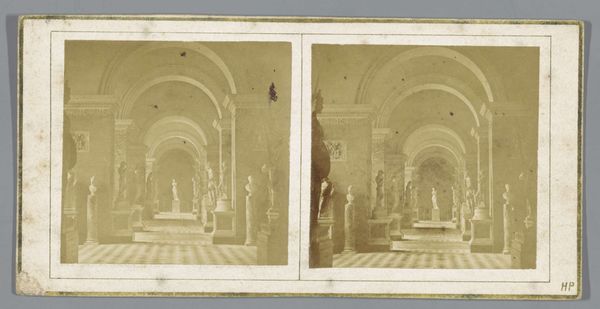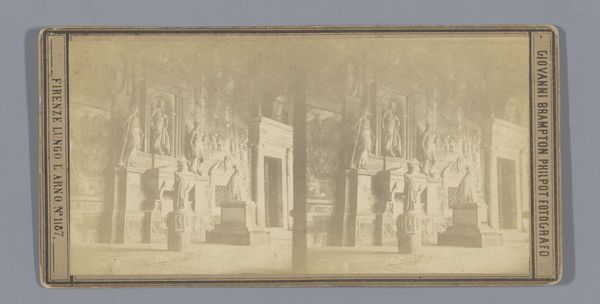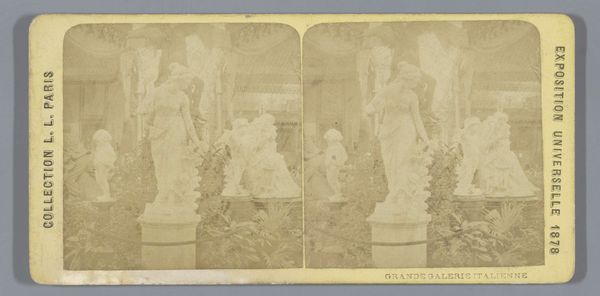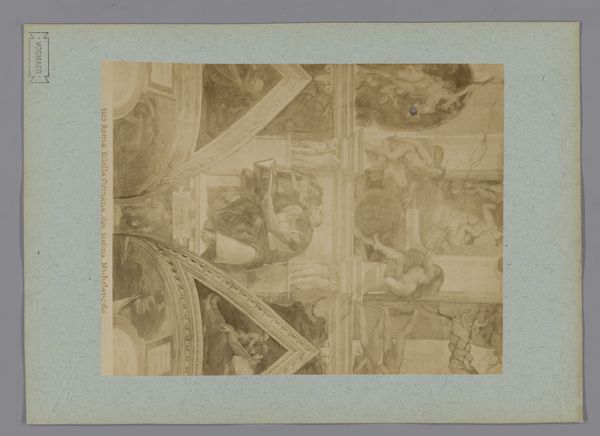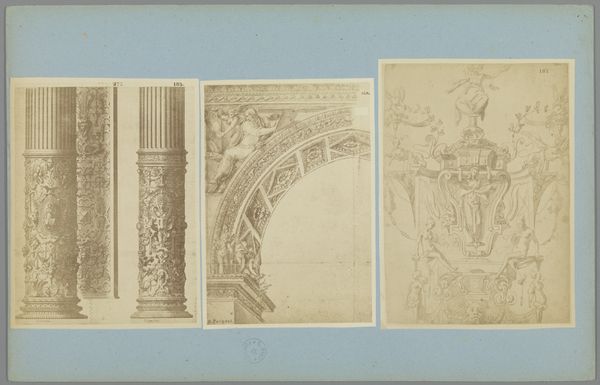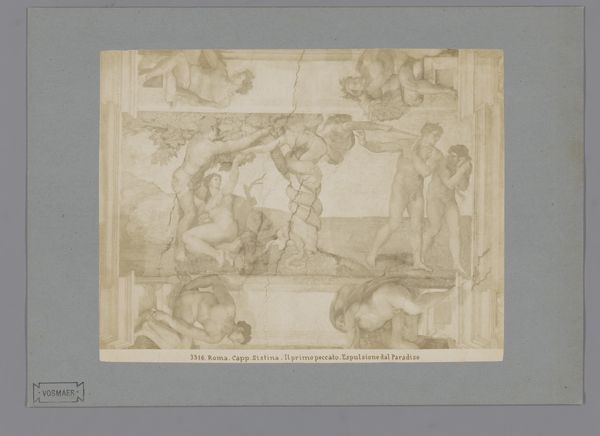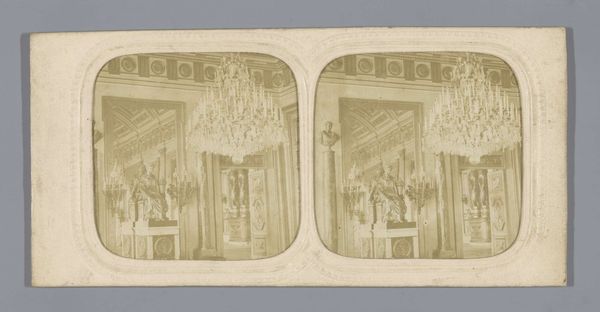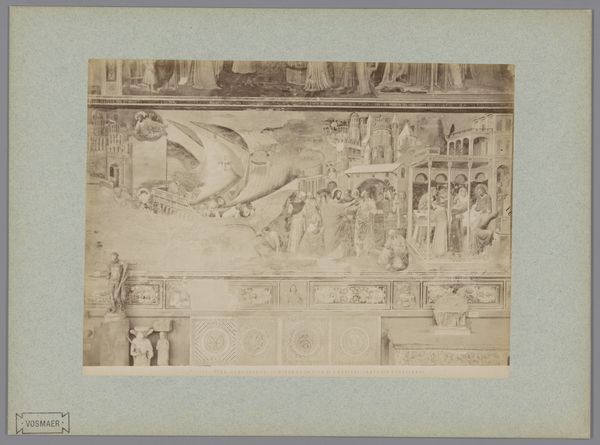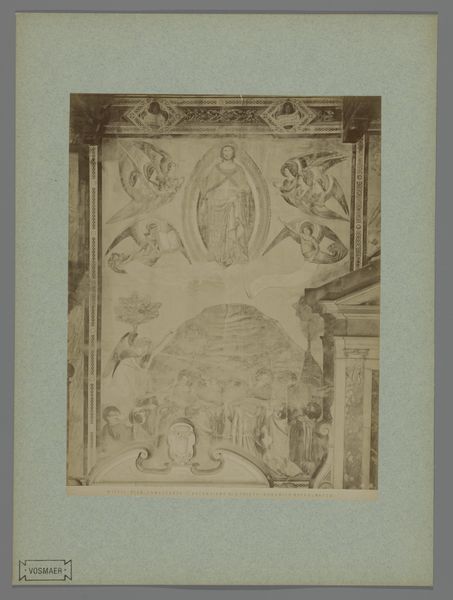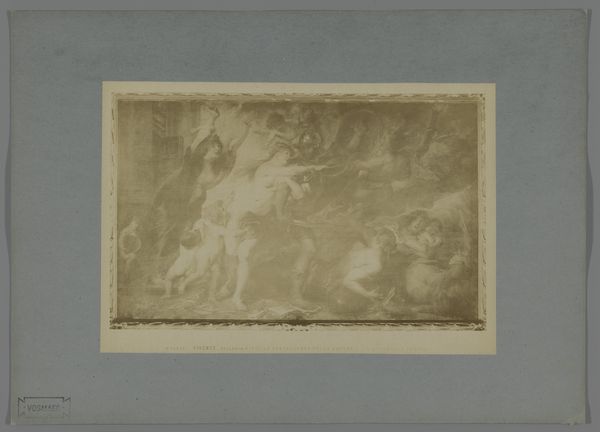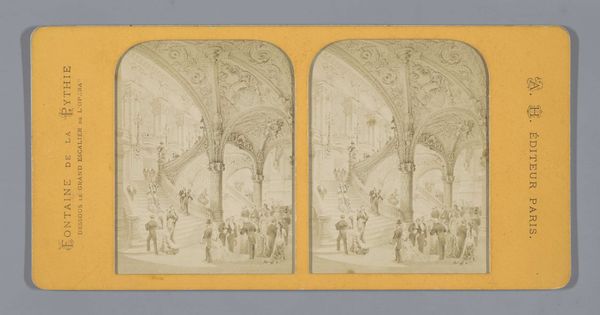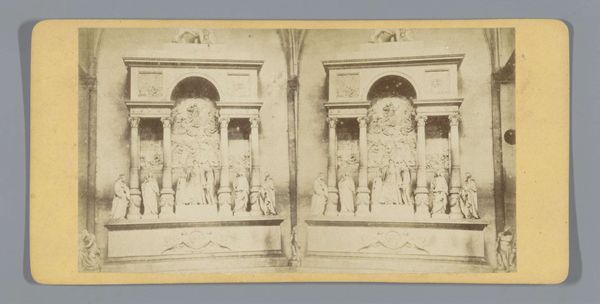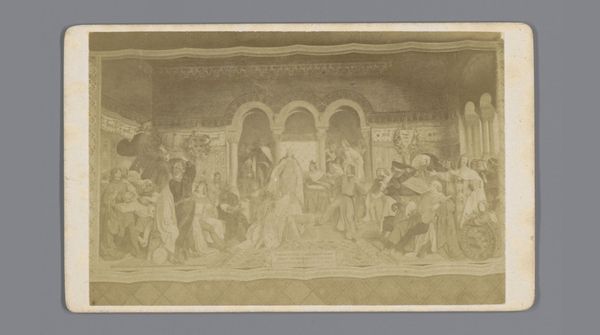
Beeldengalerij in de Salle du Gladiateur, Musée du Louvre, Parijs 1853 - 1863
0:00
0:00
photography, gelatin-silver-print
#
neoclacissism
#
landscape
#
photography
#
gelatin-silver-print
#
genre-painting
#
realism
Dimensions: height 85 mm, width 171 mm
Copyright: Rijks Museum: Open Domain
Editor: Here we have Charles-Henri Plaut’s "Beeldengalerij in de Salle du Gladiateur, Musée du Louvre, Paris", a gelatin silver print created between 1853 and 1863. It depicts a hall filled with classical sculptures and the overall tone is ethereal, almost ghostly. What do you see in this piece? Curator: It is fascinating how Plaut uses photography to capture and re-present classical sculptures within the Louvre. Consider the Gladiator himself. In many cultures, the gladiator represents struggle, triumph, and often, sacrifice. What does it mean when we remove such figures from the arena and place them in a museum setting, devoid of their original context? Editor: It feels like a statement about preservation and how we choose to remember the past. Curator: Precisely. This image isn’t simply about documentation; it's about how we transform cultural memory. Notice the repetition of forms and figures in the hall, all pointing back toward this same moment, and consider how photography itself contributes to this process of repetitive remembering, almost like an echo in time. Editor: So, you're saying the image captures not just the statues, but our evolving relationship with them? Curator: Indeed! The ghostly aesthetic enhances this notion, hinting at the fading echoes of historical significance and posing important questions about how we construct meaning and perpetuate symbols across generations. Editor: I never thought about it that way before. I was so focused on the visual aspect that I didn’t consider how it affects cultural memory. Thank you. Curator: It's in these layers of cultural symbolism that art truly comes alive. This piece highlights the cultural meaning in everyday objects, that still remains relevant today.
Comments
No comments
Be the first to comment and join the conversation on the ultimate creative platform.
